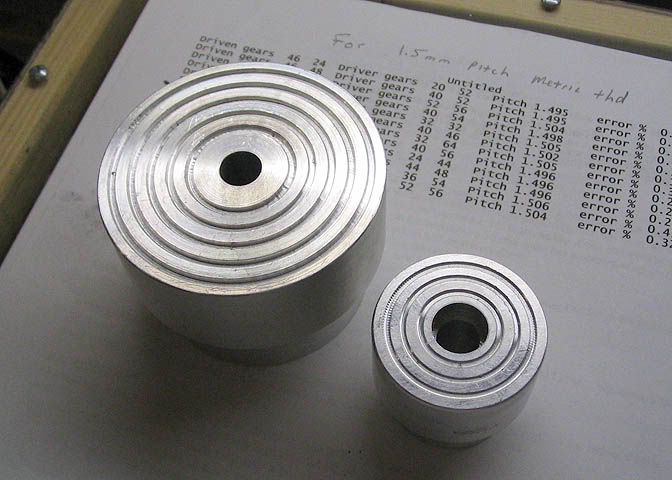ChooChooMike
Well-Known Member
- Joined
- Jan 5, 2008
- Messages
- 863
- Reaction score
- 13
I finally got around to trying out using superglue to hold a part so I could machine it in my mill (Sherline).
I'm experimenting with a small (3/4" & 1/2" o.d.) brass and steel flywheels (I'm building the "Millie" steam engine from the Sherline book, yes will post a build thread ! ) I turn down the diameter on my lathe (also Sherline), part it off, then need to make it to the right thickness - either 1/8" or 1/4". The 1/8" doesn't leave much to grip on to put back into the 3-jaw to clean off the parted-off end and to desired thickness. Plus aligning it is then a PITA unless I have some sort of spacer plate between the face of the 3-jaw and the part itself.
) I turn down the diameter on my lathe (also Sherline), part it off, then need to make it to the right thickness - either 1/8" or 1/4". The 1/8" doesn't leave much to grip on to put back into the 3-jaw to clean off the parted-off end and to desired thickness. Plus aligning it is then a PITA unless I have some sort of spacer plate between the face of the 3-jaw and the part itself.
Spacer plate tip
So I vaguely remembered someone mentioned using superglue to hold temporarily hold a part. So I used superglue gel 1st with using a brass round on an aluminum scrap plate in the mill. I held the plate down with standard mill clamps. Light cuts (2-5 thou) seemed to work ok. Went a little heavier and the brass got kicked out.
I looked at the superglue bond and it wasn't covering the whole bottom of the brass round. Hmmm, even when I clamped the parts together while letting the superglue dry should have spread the gel around ?? I tried again, filing off the old glue and making sure the alum plate and brass round's bottom where flat. It got kicked out again.
Hmmm, next I tried the steel round/alum plate with the liquid (non-gel) superglue and it's held up just great with mild cut (2-5 thou). I haven't tried the steel/alum/superglue-gel or brass/alum/superglue-liquid variations yet.
I'll post some pictures in the next day or so.
Now my question is, what's the best way to release the 2 parts - i.e. steel from aluminum plate ? I've seen notes on using acetone (e.g. fingernail polish remover) or hitting it with a heat gun/torch to break down the superglue.
Any suggestions ?
Thanks,
Mike
I'm experimenting with a small (3/4" & 1/2" o.d.) brass and steel flywheels (I'm building the "Millie" steam engine from the Sherline book, yes will post a build thread !
Spacer plate tip
So I vaguely remembered someone mentioned using superglue to hold temporarily hold a part. So I used superglue gel 1st with using a brass round on an aluminum scrap plate in the mill. I held the plate down with standard mill clamps. Light cuts (2-5 thou) seemed to work ok. Went a little heavier and the brass got kicked out.
I looked at the superglue bond and it wasn't covering the whole bottom of the brass round. Hmmm, even when I clamped the parts together while letting the superglue dry should have spread the gel around ?? I tried again, filing off the old glue and making sure the alum plate and brass round's bottom where flat. It got kicked out again.
Hmmm, next I tried the steel round/alum plate with the liquid (non-gel) superglue and it's held up just great with mild cut (2-5 thou). I haven't tried the steel/alum/superglue-gel or brass/alum/superglue-liquid variations yet.
I'll post some pictures in the next day or so.
Now my question is, what's the best way to release the 2 parts - i.e. steel from aluminum plate ? I've seen notes on using acetone (e.g. fingernail polish remover) or hitting it with a heat gun/torch to break down the superglue.
Any suggestions ?
Thanks,
Mike
































































